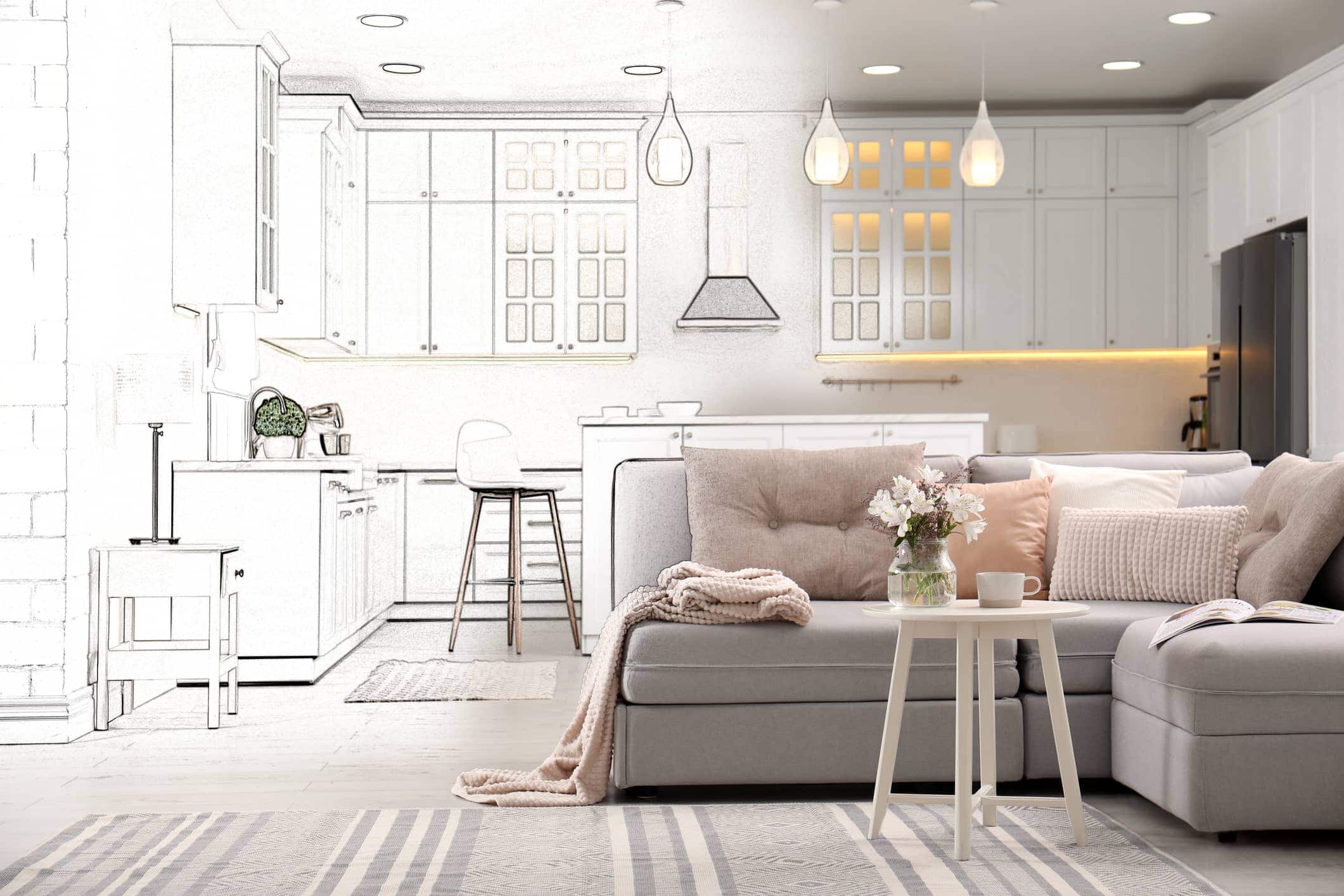The Importance of Great Copy in Real Estate Listings
Great copy in a real estate listing serves several vital functions:
- Attract Attention: It grabs the reader’s interest and makes them want to learn more about the property.
- Engage Potential Buyers: It keeps potential buyers engaged by highlighting the property’s unique features and benefits.
- Inform and Persuade: It provides essential information while persuading buyers that your property is worth their time and consideration.
- Facilitate a Connection: It helps potential buyers visualize themselves living in the home, creating an emotional connection.
Structuring Your Real Estate Listing
A well-structured real estate listing is easy to read and navigate, guiding potential buyers through the most important aspects of the property. Here’s a suggested structure for your listing:
- Headline: A catchy and informative headline.
- Introduction: A brief overview of the property.
- Property Features: Detailed descriptions of the main features.
- Neighborhood Highlights: Information about the surrounding area.
- Call to Action: Encouragement to contact for more information or to schedule a viewing.
Crafting the Headline
The headline is the first thing potential buyers will see, so it needs to be attention-grabbing and informative. Here are some tips for crafting a compelling headline:
- Be Specific: Mention key features such as the number of bedrooms, bathrooms, and any standout features (e.g., “3-Bedroom Home with Stunning Garden and Pool”).
- Use Descriptive Adjectives: Words like “charming,” “modern,” “spacious,” and “cozy” can help convey the property’s appeal.
- Highlight Unique Selling Points: If your property has something special (e.g., “Ocean Views,” “Recently Renovated”), make sure to include it.
Example Headlines:
- “Charming 4-Bedroom Home with Large Backyard in Family-Friendly Neighborhood”
- “Modern 2-Bedroom Condo with Stunning City Views and Rooftop Pool”
- “Spacious 5-Bedroom House with Private Garden and Garage”
Writing the Introduction
The introduction should provide a brief overview of the property, highlighting its most attractive features. Aim to capture the reader’s interest and entice them to read further.
Tips for the Introduction:
- Keep It Short and Sweet: Aim for 2-3 sentences.
- Highlight Key Features: Mention the most appealing aspects of the property.
- Create a Sense of Urgency: If applicable, indicate that the property is expected to sell quickly.
Example Introduction: “Welcome to your dream home! This charming 4-bedroom, 2-bathroom house features a spacious living area, a modern kitchen, and a large backyard perfect for entertaining. Located in a quiet, family-friendly neighbourhood, this home won’t be on the market for long!”
Detailing Property Features
This section should provide a detailed description of the property’s features. Break it down into categories to make it easier to read.
Interior Features
- Living Areas: Describe the main living areas, such as the living room, dining room, and family room. Mention any notable features like fireplaces, large windows, or open floor plans.
- Kitchen: Highlight key aspects of the kitchen, such as modern appliances, countertops, cabinetry, and any recent updates or renovations.
- Bedrooms: Provide information on the number of bedrooms, their size, and any special features like walk-in closets or en-suite bathrooms.
- Bathrooms: Detail the number of bathrooms and any standout features, such as double sinks, soaking tubs, or high-end fixtures.
Exterior Features
- Yard/Garden: Describe the size and layout of the yard or garden. Mention any landscaping, patios, decks, or outdoor living spaces.
- Garage/Parking: Provide information on the availability of garage space or parking.
- Additional Structures: If there are any additional structures, such as a shed, guest house, or pool house, include details about them.
Special Features
- Recent Upgrades: Highlight any recent upgrades or renovations, such as a new roof, updated HVAC system, or energy-efficient windows.
- Energy Efficiency: Mention any energy-efficient features, such as solar panels, insulation, or smart home technology.
Example Property Features Section: Interior Features:
- Spacious living room with hardwood floors, a cozy fireplace, and large windows that let in plenty of natural light.
- Modern kitchen featuring stainless steel appliances, granite countertops, custom cabinetry, and a convenient breakfast nook.
- Four generously sized bedrooms, including a master suite with a walk-in closet and a luxurious en-suite bathroom with a soaking tub and separate shower.
- Two well-appointed bathrooms with updated fixtures and finishes.
Exterior Features:
- Large, beautifully landscaped backyard with a patio area perfect for outdoor dining and entertaining.
- Two-car garage with additional driveway parking.
- Charming front porch that offers a welcoming entrance to the home.
Special Features:
- Recently replaced roof and updated HVAC system.
- Energy-efficient windows and a smart thermostat for lower utility bills.
Highlighting Neighborhood Features
The neighborhood can be just as important as the house itself. Provide information about the local area to help potential buyers understand what makes it a great place to live.
Local Amenities
- Schools: Mention nearby schools and their ratings.
- Parks and Recreation: Highlight local parks, playgrounds, and recreational facilities.
- Shopping and Dining: Provide information about nearby shopping centres, restaurants, and cafes.
- Transportation: Mention public transportation options and proximity to major highways.
Community
- Safety: Provide information on the safety of the neighbourhood.
- Community Events: Highlight any local events or community groups.
- Lifestyle: Describe the overall vibe of the community, whether it’s family-friendly, vibrant, quiet, etc.
Example Neighborhood Features Section: “This home is located in the highly sought-after Maplewood neighbourhood, known for its excellent schools and friendly community atmosphere. Just a short walk to Maplewood Park, you’ll find plenty of opportunities for outdoor activities, including hiking trails, playgrounds, and sports fields. Conveniently located near Maplewood Shopping Center, you’ll have easy access to a variety of shops, restaurants, and cafes. Commuters will appreciate the proximity to Highway 101 and the Maplewood Train Station, providing quick and easy access to downtown.”
Crafting a Strong Call to Action
A call to action (CTA) encourages potential buyers to take the next step. Make sure your CTA is clear and compelling.
Tips for a Strong CTA:
- Be Direct: Clearly state what you want the reader to do next.
- Create Urgency: Encourage them to act quickly.
- Provide Contact Information: Make it easy for them to reach you.
Tips for Choosing and Using Photos
High-quality photos are essential for a successful real estate listing. They can capture the attention of potential buyers and provide a visual representation of the property. Here are some tips for choosing and using photos effectively:
Hiring a Professional Photographer
While it’s possible to take your photos, hiring a professional photographer can make a significant difference in the quality of your listing. Professional photographers have the skills and equipment to capture your home in the best light, making it look more appealing to buyers.
Preparing Your Home for Photos
Before taking photos, make sure your home is clean, clutter-free, and well-staged. Here are some tips to prepare your home:
- Clean Thoroughly: Make sure every room is spotless.
- Declutter: Remove personal items, excess furniture, and anything that could distract from the space.
- Stage the Home: Arrange furniture and decor to highlight the best features of each room.
- Light It Up: Ensure all lights are working and use natural light wherever possible.
Essential Photos to Include
Make sure to include a variety of photos that showcase the entire property. Here are some essential shots to include:
- Exterior Photos:
- Front of the house (curb appeal)
- Backyard and garden
- Any additional structures (garage, shed, pool)
- Interior Photos:
- Living room
- Kitchen
- Dining room
- Bedrooms
- Bathrooms
- Any special features (fireplace, walk-in closet, home office)
- Neighbourhood Photos:
- Local parks and recreation areas
- Nearby schools
- Shopping and dining areas
Photo Tips
- Use Natural Light: Whenever possible, use natural light to make rooms look bright and inviting.
- Shoot at Eye Level: Take photos at eye level to give a natural perspective.
- Highlight Key Features: Focus on unique features and selling points.
- Avoid Wide-Angle Lenses: While wide-angle lenses can capture more of the room, they can also distort the space. Use them sparingly.
- Edit Carefully: Use photo editing software to enhance the images, but avoid over-editing. The photos should be a true representation of the property.
Writing Compelling Photo Descriptions
Accompanying your photos with well-written descriptions can enhance their impact. Here’s how to write compelling photo descriptions:
xterior Photo Descriptions
- Front of the House: Describe the curb appeal, mentioning the welcoming entrance, attractive landscaping, and any unique features.
- Example: “Welcome to this charming colonial-style home, featuring a beautifully manicured lawn, vibrant flowerbeds, and a classic front porch perfect for relaxing with a morning coffee.”
- Backyard and Garden: Highlight the outdoor living space, mentioning the size of the yard, any patios or decks, and special features like pools or play areas.
- Example: “Step into your private oasis with this spacious backyard, complete with a large patio for entertaining, lush greenery, and a sparkling swimming pool.”
- Additional Structures: Provide details about garages, sheds, or guest houses, emphasizing their functionality and condition.
- Example: “The property includes a two-car garage with ample storage space and a charming garden shed for all your outdoor tools.”
Interior Photo Descriptions
- Living Room: Focus on the room’s size, natural light, and any standout features like fireplaces or built-in shelving.
- Example: “The bright and airy living room boasts large windows that flood the space with natural light, complemented by a cozy fireplace and custom built-ins.”
- Kitchen: Highlight modern appliances, countertops, cabinetry, and any recent updates or unique features.
- Example: “The gourmet kitchen features stainless steel appliances, granite countertops, and a spacious island, perfect for meal prep and casual dining.”
- Dining Room: Emphasize the room’s ambience, size, and suitability for gatherings.
- Example: “The elegant dining room offers ample space for family dinners and entertaining guests, complete with hardwood floors and a stylish chandelier.”
- Bedrooms: Describe the comfort, size, and any special features of the bedrooms.
- Example: “The master suite provides a serene retreat with a large walk-in closet, en-suite bathroom, and private balcony overlooking the garden.”
- Bathrooms: Mention the fixtures, finishes, and any luxury features.
- Example: “The spa-like master bathroom includes a soaking tub, separate glass-enclosed shower, and dual vanity with quartz countertops.”
- Special Features: Focus on unique elements like home offices, walk-in closets, or finished basements.
- Example: “The fully finished basement offers additional living space, ideal for a home theatre, gym, or playroom.”
Neighbourhood Photo Descriptions
- Local Parks and Recreation Areas: Describe the amenities and appeal of nearby parks.
- Example: “Enjoy the great outdoors at Maplewood Park, just a short walk away, featuring hiking trails, playgrounds, and picnic areas.”
- Nearby Schools: Highlight the quality and proximity of local schools.
- Example: “Located within the highly-rated Maplewood School District, this home is perfect for families seeking excellent educational opportunities.”
- Shopping and Dining Areas: Mention popular local spots for shopping and dining.
- Example: “Conveniently located near Maplewood Shopping Center, you’ll have easy access to a variety of shops, restaurants, and cafes.”
Additional Tips for Writing Effective Real Estate Listings
Use Descriptive Language
Descriptive language can paint a vivid picture for potential buyers, helping them visualize living in the home. Use adjectives that evoke a sense of the property’s character and appeal.
- Example: “This charming cottage exudes warmth and coziness, with its rustic wood beams, stone fireplace, and inviting front porch.”
Be Honest and Accurate
Honesty is crucial in real estate listings. Misleading information can lead to disappointment and distrust, which may ultimately hinder the sale.
- Example: “While the home needs some updates, it offers a fantastic opportunity to customize and add personal touches.”
Highlight Unique Selling Points
Identify and emphasize the unique features that set your property apart from others on the market.
- Example: “This eco-friendly home is equipped with solar panels, energy-efficient windows, and a rainwater harvesting system.”
Use Bullet Points for Easy Reading
Bullet points can make your listing easier to read and help potential buyers quickly identify key features.
- Example:
- 3 spacious bedrooms with ample closet space
- Recently renovated kitchen with modern appliances
- Large backyard with a covered patio and garden
Include a Floor Plan
Providing a floor plan can help buyers understand the layout and flow of the home. It’s a valuable addition that can enhance their ability to visualize the space.
- Example Description: “Refer to the included floor plan for a detailed layout of the home, showcasing the spacious living areas and thoughtfully designed bedrooms.”
Showcase Lifestyle Benefits
Highlight the lifestyle benefits of living in the home and neighbourhood. This can help buyers envision their future life there.
- Example: “Enjoy a peaceful suburban lifestyle with easy access to downtown amenities, top-rated schools, and beautiful parks.”
Leveraging Technology and Online Platforms
Utilize Virtual Tours
Virtual tours provide an immersive experience for potential buyers, allowing them to explore the property online. This can be especially helpful for out-of-town buyers or during times when in-person viewings are limited.
- Example Description: “Take a virtual tour of this stunning home and explore its beautiful features from the comfort of your own home. Click the link to start your tour.”
Optimize for Mobile Devices
Ensure your listing is mobile-friendly, as many buyers will view it on their smartphones or tablets. Use clear, concise text and high-quality images that load quickly on all devices.
Share on Social Media
Promote your listing on social media platforms to reach a wider audience. Share visually appealing photos and engaging descriptions, and encourage friends and family to share your post.
- Example: “Check out this beautiful home now available in Maplewood! Click the link for more details and share with anyone who might be interested.”
Monitoring and Adjusting Your Listing
After your listing goes live, monitor its performance and be prepared to make adjustments if necessary.
Track Engagement
Pay attention to how much interest your listing is generating. This includes views, inquiries, and feedback from potential buyers.
- Example: “If you notice a lack of interest or receive feedback about specific aspects of the listing, consider making adjustments to the copy or photos.”
Update Photos Seasonally
If your listing is on the market for an extended period, update the photos to reflect the current season. This keeps the listing fresh and relevant.
- Example: “Replace summer photos with fall or winter images to showcase the home in different seasonal settings.”
Refresh the Copy
Periodically review and update the listing description to keep it current and engaging. Highlight any new improvements or changes to the property.
- Example: “Recently added new landscaping and outdoor lighting. Updated the listing to highlight these enhancements.”
Writing a great copy for a real estate listing is an art that requires attention to detail, creativity, and a deep understanding of what potential buyers are looking for. By following the tips and strategies outlined in this guide, you can create an engaging and effective listing that showcases your property’s best features, attracts the right buyers, and ultimately leads to a successful sale.
Remember, the key components of a compelling real estate listing include a catchy headline, a strong introduction, detailed descriptions of the property and neighbourhood features, high-quality photos, and a clear call to action. Leverage technology, monitor the performance of your listing, and be ready to make adjustments as needed to maximize its impact. With the right approach, you can successfully sell your home on your own and achieve the best possible outcome.





